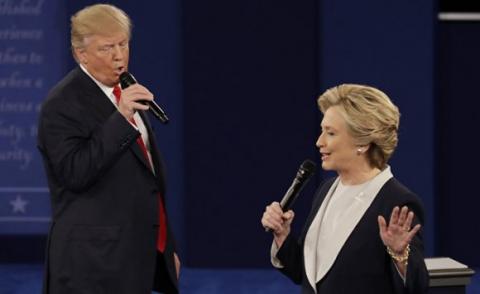How the candidates see America’s place in the world
Mr Trump’s scorn for facts makes his precise world view hard to pin down. But over the years he has signalled some basic principles, starting with an un-Reaganesque contempt for democracy. He has praised the Chinese government’s violent suppression of protests in 1989 and lauded Mr Putin for his “very strong control over his country”. He has suggested that America’s obligation to defend NATO allies might be conditional. He has promised to “bomb the shit” out of Islamic State, without explaining what that means, and regretted that American troops did not seize and keep Iraq’s oilfields. There’s more: he says he will renegotiate the nuclear-arms deal with Iran and press China into dealing with North Korea. And he called climate change a hoax and promised to cancel billions of dollars in payments to programmes designed to lessen it.
If Mr Trump has a core philosophy when it comes to world affairs, it is suspicion of free trade. He has vowed to renegotiate the NAFTA trade pact with Canada and Mexico and to put the TPP deal on hold in his first days as president. He would order his treasury secretary to declare China a currency manipulator, calling the yuan deliberately undervalued, though that charge is clearly out of date, given that China has recently spent to prop up its currency. Trump advisers vow that tariffs will be used to eliminate deficits with foreign trade partners—though that flies in the face of economic theory about America’s inherent advantage as the issuer of the world’s main reserve currency. The only real certainty about Mr Trump’s foreign policies is that he knows what his voters want to hear: that America holds a winning hand, if only it is ruthless enough to play it. If elected, Mr Trump would struggle to fulfil half his promises. But given the geopolitical chaos a President Trump threatens to unleash, disappointed voters in America will be the least of the world’s worries.

